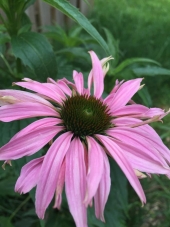
 1
1





 3
3




List of Bryant RedHawk's Epic Soil Series Threads We love visitors, that's why we live in a secluded cabin deep in the woods. "Buzzard's Roost (Asnikiye Heca) Farm." Promoting permaculture to save our planet.
 4
4




A build too cool to miss:Mike's GreenhouseA great example:Joseph's Garden
All the soil info you'll ever need:
Redhawk's excellent soil-building series









Trace Oswald wrote:Could you define "digging"? Broadforking may or may not be something you considering digging, but it's a great way to get some amendments down to break up your clayish soil.
 4
4




Jamin Grey wrote:I don't know how easy it digs through clay-esqe soil with deep grass roots,
A build too cool to miss:Mike's GreenhouseA great example:Joseph's Garden
All the soil info you'll ever need:
Redhawk's excellent soil-building series





 2
2




Bryant RedHawk wrote:So your trees are all in containers sitting in a low lying area?
The reason I'm asking is you say they are in little planter boxes but you want to mulch the soil around the containers?
If the trees are in containers to keep them from the water of the semi-annual flooding, there is no need to treat the soil around the containers.
The soil in the containers is where the roots are living, so what is under them could be concrete, gravel, grass, it just doesn't matter to the tree roots since they are inside the container.







Trace Oswald wrote:That's what I use mine for. Obviously the first couple times are more work, but if you use it more often than once in a spot, it gets easier each time. I rarely do any area more than once though. It's pretty pleasant work.
 1
1








 1
1




 1
1




William Bronson wrote:A simple way to improve the tilth might be to expand the raised beds.
Carbon over soil brings worms, and they improve tilt.
Expand the beds to 8 or 10 square feet, lay down card board and fill the new beds in with woodchips.
 6
6




"The rule of no realm is mine. But all worthy things that are in peril as the world now stands, these are my care. And for my part, I shall not wholly fail in my task if anything that passes through this night can still grow fairer or bear fruit and flower again in days to come. For I too am a steward. Did you not know?" Gandolf





Some places need to be wild
 2
2




 3
3




Daniel
 1
1




A build too cool to miss:Mike's GreenhouseA great example:Joseph's Garden
All the soil info you'll ever need:
Redhawk's excellent soil-building series









Daniel Kaplan wrote:I like the mulch/woodchip idea. It sounds like the only real obstacle is them washing away in the floodwaters. How deep does it get? Can you divert or slow the water down so it doesn't carry them away?
Would something like sunflower stalks be enough to hold mulch in place? Would you have to grow small bushes to do that?
 1
1





|
no wonder he is so sad, he hasn't seen this tiny ad:
The new permaculture playing cards kickstarter is now live!
https://www.kickstarter.com/projects/paulwheaton/garden-cards
|




